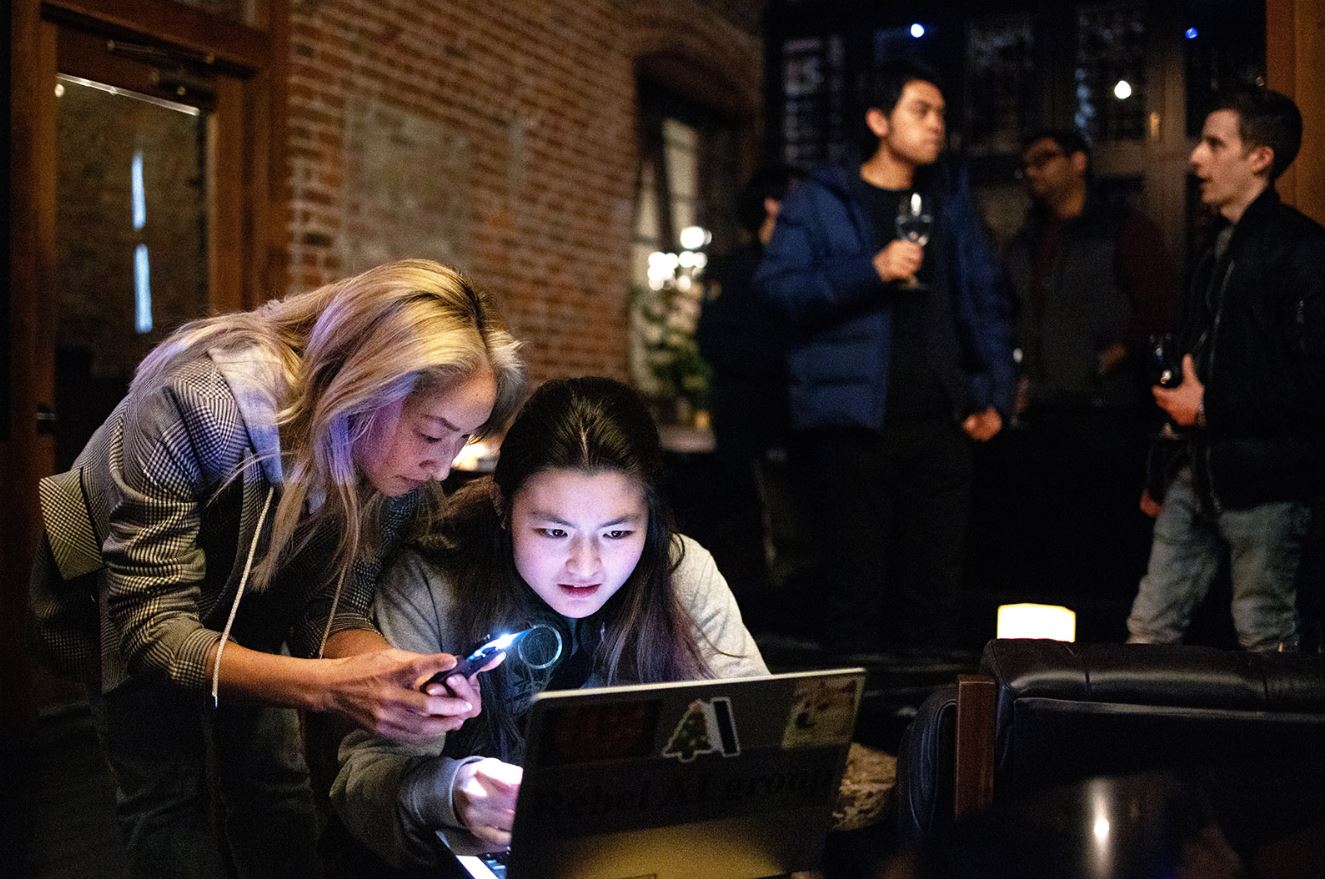 In San Francisco’s bustling waterfront, the Exploratorium museum is alive with family fun and hands-on experiments in artificial intelligence. Visitors craft shadow puppets for AI to recognise, generate quirky songs, and even take part in drawing games that pit human creativity against machine learning. It’s a chance for both excitement and reflection on what the future holds.
In San Francisco’s bustling waterfront, the Exploratorium museum is alive with family fun and hands-on experiments in artificial intelligence. Visitors craft shadow puppets for AI to recognise, generate quirky songs, and even take part in drawing games that pit human creativity against machine learning. It’s a chance for both excitement and reflection on what the future holds.
“AI breaks down barriers, allowing people to converse and engage,” says Doug Thistlewolf, the exhibit development manager at the Exploratorium. His words capture the palpable optimism and friendly curiosity that fills the space.
Much like a modern gold rush, the city is experiencing an AI boom. With Mayor Daniel Lurie recently elected, a mixture of hope and uncertainty sweeps through San Francisco. Many residents wonder how AI might reshape industries or impact job security, especially against the backdrop of tech layoffs and the city’s rising living costs.
Silicon Valley has long been the recognised hub of innovation, home to tech giants like Meta, Google, Apple, and Nvidia. But now, the spotlight is firmly on San Francisco, which houses key players such as OpenAI and Scale AI. The shift in focus is as dramatic as it is welcome.
From enhancing social media feeds and fine-tuning language translation to powering virtual assistants, AI is already woven into everyday tech. OpenAI’s ChatGPT, for example, has spurred a competitive race across media and healthcare sectors. Companies are now offering attractive packages to lure top researchers, all while investments in AI firms are soaring.
Early in 2025, venture capital for AI in San Francisco topped $29 billion, doubling what was seen in 2022. By August, the region was securing 46.6% of U.S. AI funding—a clear sign of the city’s growing influence in the field.
Economic revitalisation is also on the cards. Ted Egan, San Francisco’s chief economist, points out that AI firms leasing over 5 million square feet of office space could slash vacancy rates by 2030, providing a much-needed boost to the local economy in a post-pandemic era.
Tech veteran Vijay Karunamurthy, after 25 years in the industry, observes that the AI surge brings with it a dynamic energy. Nightly events and crowded coffee shops filled with AI enthusiasts create an environment where ideas and innovations are quick to spark.
Yet, not everyone is convinced. Protests outside OpenAI’s Mission Bay headquarters remind us that concerns—whether about job security or privacy—remain part of the conversation. These voices are important when evaluating how AI affects everyday lives.
In the realm of education, the rise of generative AI is leading to both transformation and caution. Arno Puder, head of computer science at San Francisco State University, sees enormous potential for change but is mindful of its impact on the job market. The university’s new generative AI certificate programme is one way to help students navigate this evolving landscape.
The Exploratorium’s exhibit, supported by Anthropic, is more than an interactive display—it’s a forum for discussing AI’s benefits and risks. Residents like Martha Chesley, who has called the city home for 50 years, believe that if AI can bring people together and generate revenue, it will help breathe fresh life into vacant storefronts and fading neighbourhoods.
Across the city, startups proudly display their innovations on billboards and public transport ads. In the culturally vibrant Mission District, adverts striking a balance between AI and human interaction underline the community’s commitment to both progress and connection.
Founded in 2022, AI startup Outset is already making waves with its approach to enhancing product development through AI-driven interviews. CEO Aaron Cannon cites San Francisco’s deep talent pool as a critical asset for these emerging ventures.
Neighbourhoods like Hayes Valley—nicknamed ‘Cerebral Valley’—and the Northern Waterfront are rapidly evolving into centres for AI innovation, attracting entrepreneurs who value collaborative environments and fresh ideas. Michael Phillips of Jamestown adds that close-knit teamwork is key to crafting competitive AI products.
Ultimately, San Francisco’s AI surge is more than a tech trend—it’s a pivotal moment in the city’s ongoing evolution. While challenges remain, the mix of innovation, community spirit, and economic opportunity paints a promising picture for the future.








